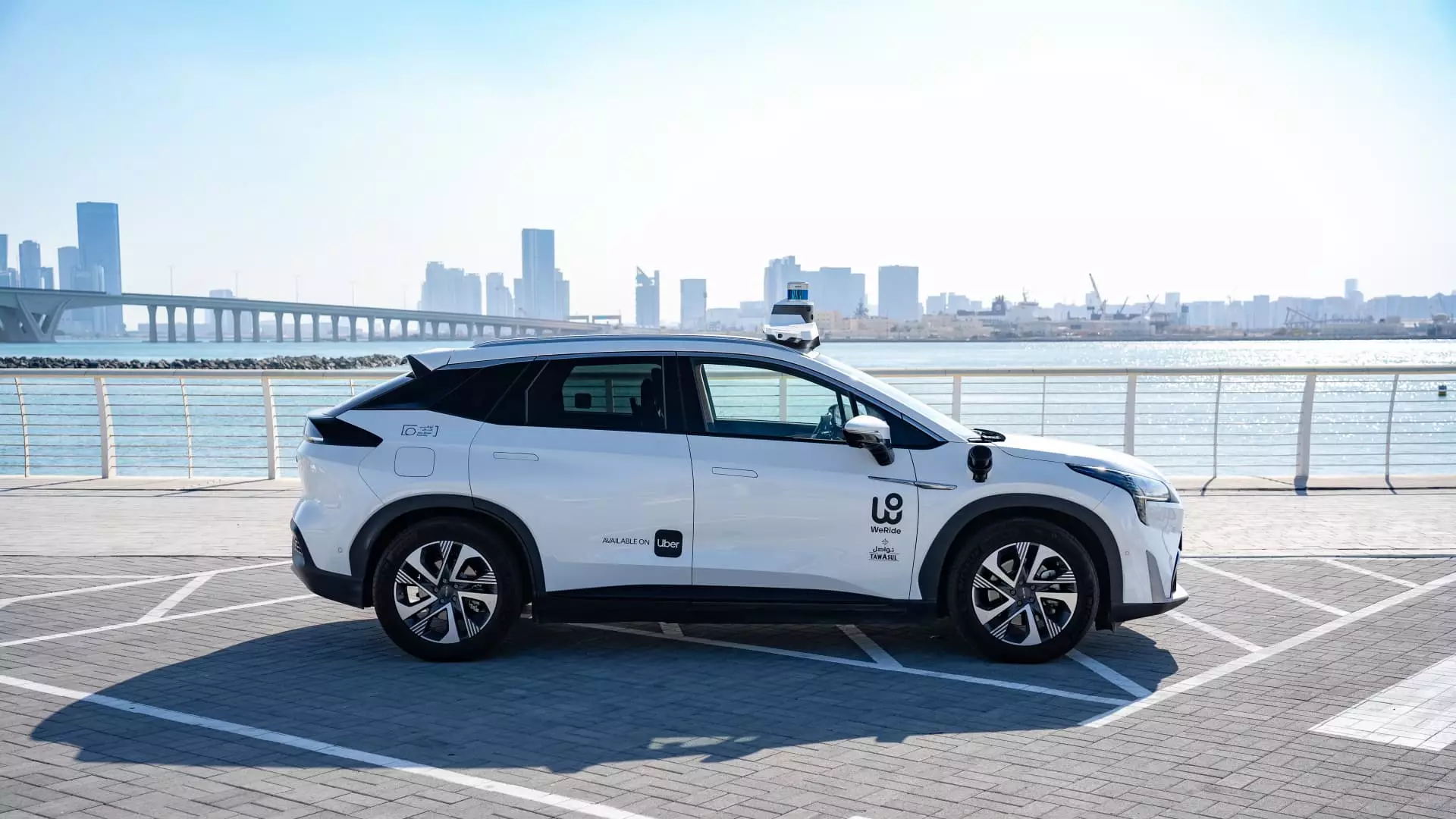Uber has recently announced an intriguing partnership with WeRide, a Chinese leader in autonomous vehicle technology, to introduce robotaxi services in Abu Dhabi. This collaboration aims to enhance the existing ride-hailing experience by integrating autonomous technology, which is becoming increasingly prominent in the transport sector. Initially, these robotaxis will operate with a human driver on board, serving as a safety measure to foster confidence among passengers and maintain safety for pedestrians. This cautious approach underscores the dual priorities of innovation and safety that define Uber’s strategy in new markets.
The goal is ambitious: a fully driverless service is planned for completion by 2025. The areas slated for initial service include bustling locations such as Saadiyat Island and Yas Island, along with key transit to Zayed International Airport. This decision not only targets high-demand environments but also enhances the convenience of autonomous transport for tourists and residents alike. By strategically selecting these routes, Uber demonstrates an understanding of the local landscape and commuter patterns, ultimately aiming to elevate user experience in a new but growing sector.
WeRide’s status as a public entity on Nasdaq further legitimizes this partnership, suggesting financial stability and a vested interest in developing robust autonomous solutions. The company has also secured various permits across numerous global cities, such as Dubai, Singapore, and the U.S., indicating its commitment to extensive research and operations in the field. For Uber, collaborating with an established player like WeRide not only enhances its technological capabilities but also positions it strategically against competitors in regional and international markets.
Uber’s CEO, Dara Khosrowshahi, expressed optimism during a recent earnings call, reporting that the platform has successfully embedded itself within a network of over a dozen autonomous vehicle partners. The collaborative nature of these partnerships highlights a shift from a purely competitive stance to an ecosystem-focused approach that considers shared advancements in technology. Competing interests, however, loom large; companies like Waymo, owned by Alphabet, stand as both allies and potential rivals in the autonomous landscape. Analysts, such as James Cordwell from Redburn Atlantic, caution of underlying risks to Uber’s primary mobility services, hinting at a future where competition could evolve in unexpected ways.
Despite these challenges, Cordwell’s analysis paints a promising picture for Uber, acknowledging the potential for expanding its addressable market through autonomous technology. The firm maintains a positive outlook on Uber’s stock, with a target price set appreciably higher by the end of 2025. As the landscape of mobility continues to transform under the weight of technological advancements, Uber’s ventures into the world of autonomous vehicles suggest a forward-looking vision that melds innovation with operational strategy. Observers and investors alike will be watching closely as these developments unfold in Abu Dhabi and beyond, making this a pivotal moment for the future of transportation.


Leave a Reply